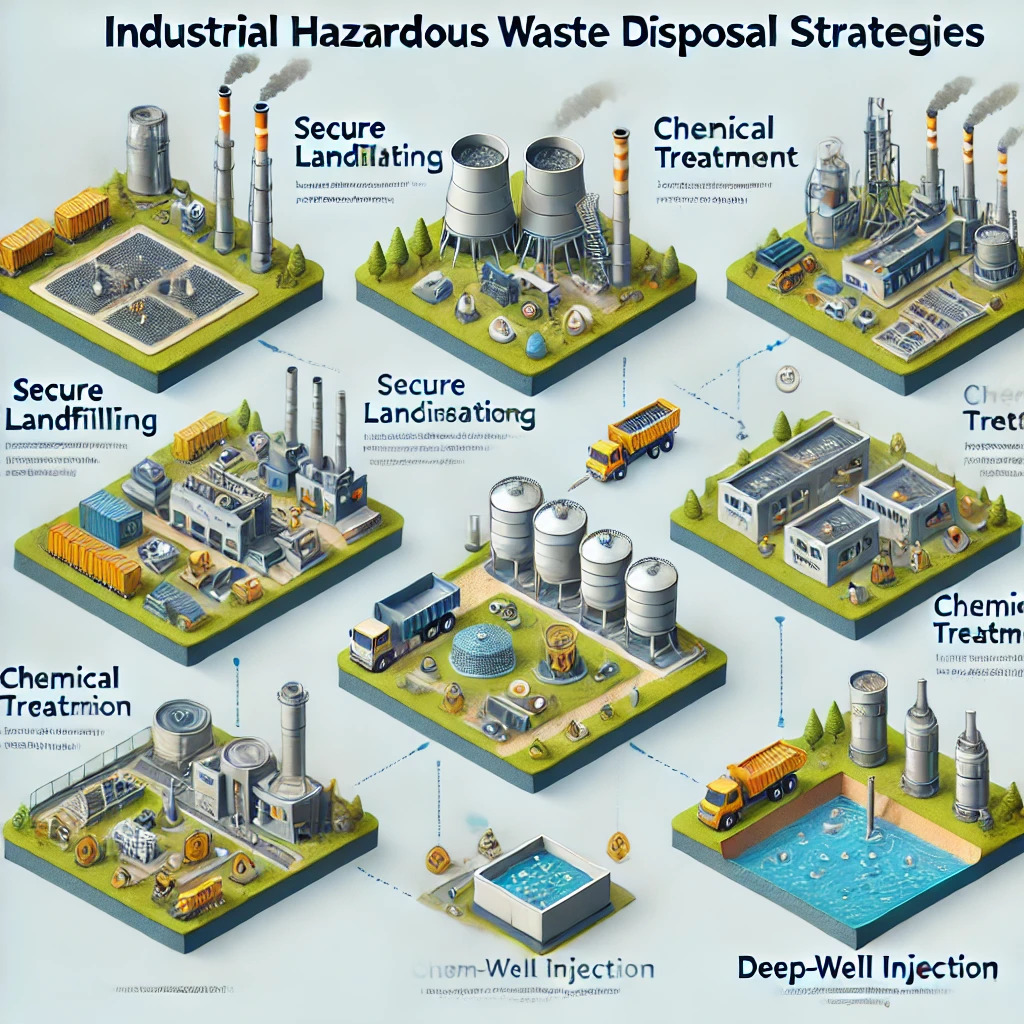Industrial hazardous waste disposal is a critical concern for businesses in Melbourne. Proper disposal is essential to comply with local and national regulations, protect the environment, and ensure workplace safety. This comprehensive guide explores the best strategies for managing industrial hazardous waste while staying compliant with legal requirements.

Table of Contents
- Understanding Industrial Hazardous Waste
- Types of Industrial Hazardous Waste
- Regulatory Framework for Waste Disposal in Melbourne
- Why Compliance is Crucial
- Steps to Identify Hazardous Waste
- Proper Storage and Labeling of Hazardous Waste
- Waste Reduction Strategies
- Recycling and Reuse of Industrial Waste
- Safe Transportation of Hazardous Waste
- Approved Disposal Methods
- Role of Licensed Waste Disposal Companies
- Employee Training on Hazardous Waste Handling
- Emergency Response and Spill Management
- Environmental Impact of Poor Waste Disposal
- Common Mistakes in Waste Disposal and How to Avoid Them
- Using Technology for Efficient Waste Management
- Cost-Effective Waste Disposal Solutions
- Government Support and Incentives for Compliance
- Frequently Asked Questions (FAQs)
- Conclusion and Call to Action
1. Understanding Industrial Hazardous Waste
Industrial hazardous waste includes chemicals, solvents, heavy metals, and other substances that pose risks to human health and the environment. Proper disposal prevents contamination and legal repercussions.
2. Types of Industrial Hazardous Waste
- Chemical Waste (e.g., acids, solvents)
- Biological Waste (e.g., lab waste, medical byproducts)
- Heavy Metals (e.g., lead, mercury)
- Flammable Substances (e.g., petroleum products)
- Radioactive Waste (e.g., isotopes from industrial use)
3. Regulatory Framework for Waste Disposal in Melbourne
Melbourne follows strict waste disposal regulations under EPA Victoria and Australian Dangerous Goods Code. Businesses must comply with:
- Environmental Protection Act 2017
- Waste Management Policy (WMP)
- Dangerous Goods Act
4. Why Compliance is Crucial
- Avoid hefty fines and legal actions
- Protect employees and the community
- Maintain a positive corporate image
- Prevent environmental contamination
5. Steps to Identify Hazardous Waste
- Conduct a waste audit
- Analyze chemical composition
- Classify waste as per regulations
- Maintain proper documentation
6. Proper Storage and Labeling of Hazardous Waste
- Use leak-proof containers
- Label containers with hazard symbols
- Store waste in designated areas
- Keep an updated inventory
7. Waste Reduction Strategies
- Implement lean manufacturing
- Substitute hazardous materials with eco-friendly alternatives
- Optimize resource usage
8. Recycling and Reuse of Industrial Waste
- Partner with licensed recycling facilities
- Convert waste into byproducts for other industries
- Reuse solvents and metals
9. Safe Transportation of Hazardous Waste
- Use licensed transporters
- Follow safety protocols
- Maintain comprehensive transport records
10. Approved Disposal Methods
- Landfilling (only in approved sites)
- Incineration (for high-risk waste)
- Chemical neutralization
- Bioremediation techniques
11. Role of Licensed Waste Disposal Companies
Hiring certified waste disposal companies ensures legal compliance and safe waste handling. Verify their EPA license before partnering.
12. Employee Training on Hazardous Waste Handling
- Conduct regular training programs
- Provide Personal Protective Equipment (PPE)
- Educate employees on emergency procedures
13. Emergency Response and Spill Management
- Develop a spill response plan
- Train employees on containment measures
- Keep spill kits accessible
14. Environmental Impact of Poor Waste Disposal
- Soil and water contamination
- Air pollution from toxic emissions
- Harm to wildlife and marine ecosystems
15. Common Mistakes in Waste Disposal and How to Avoid Them
- Improper labeling – Always use correct hazard labels
- Mixing waste types – Separate hazardous and non-hazardous waste
- Ignoring documentation – Maintain accurate records
16. Using Technology for Efficient Waste Management
- AI-based waste tracking systems
- IoT-enabled storage monitoring
- Automated compliance reporting tools
17. Cost-Effective Waste Disposal Solutions
- Bulk disposal agreements
- On-site treatment facilities
- Partnering with waste management services
18. Government Support and Incentives for Compliance
- EPA Victoria grants for sustainable waste management
- Tax benefits for eco-friendly disposal methods
19. Frequently Asked Questions (FAQs)
Q1: What happens if my business does not comply with waste regulations?
Non-compliance can result in heavy fines, legal action, and damage to your company’s reputation.
Q2: Can hazardous waste be recycled?
Yes, many hazardous materials like solvents and metals can be safely recycled by authorized facilities.
Q3: How do I choose a reliable hazardous waste disposal company?
Check for EPA licensing, experience, and customer reviews before hiring a waste disposal service.
20. Conclusion and Call to Action
Effective industrial hazardous waste disposal in Melbourne is vital for regulatory compliance, environmental safety, and business integrity. By implementing these strategies, businesses can ensure safe, responsible, and cost-effective waste management.
Need expert assistance? Contact us, a licensed hazardous waste disposal service today and ensure your business stays compliant!